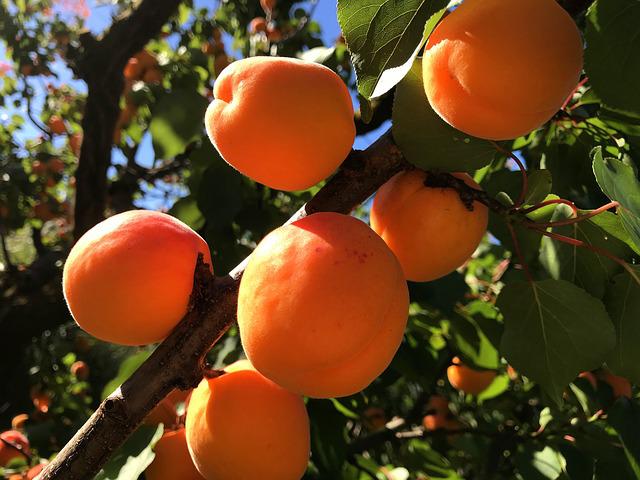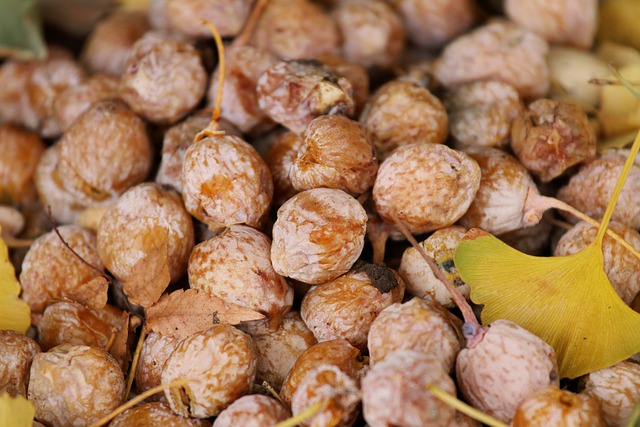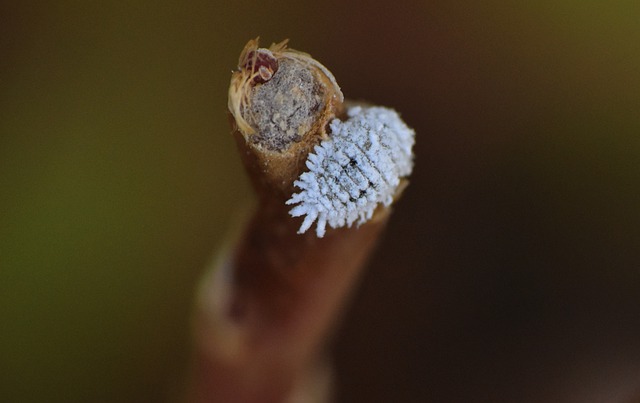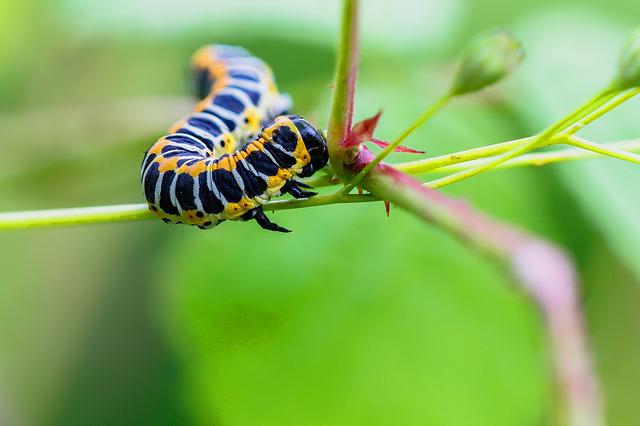All About Apricot Tree – A Complete Guide

Apricot trees are small, cold-hardy trees that thrive in warm climates. This makes them ideal for growing throughout the western United States. They produce sweet, juicy, fuzzy-skinned stone fruits with peachy-orange hues.
As natives of northeastern China, apricot trees can thrive across much of the United States’ landmass. If you’ve never had a fresh apricot, you haven’t truly lived until you’ve had one from your backyard. They’re easy to grow and yield a large harvest at the end of the season.
Table of Contents
Why Plant an Apricot Tree in Your Yard?
Have an apricot tree in your yard. Varieties vary in size. It grows to 8-12m tall with a 40cm diameter trunk.
Decent apricot trees are lovely in bloom or fruit. Even the apricot tree’s dense, graceful foliage is appealing. Leaf shapes are ovate, tapered tip, and serrated edges. Their width makes them ideal for a garden canopy.
Cooking with edible apricot tree flowers is a treat. Its flowers can brighten any garden when blooming.
Apricots are known for their delicious fruit. Apricots have a flavor similar to peaches and plums and are high in antioxidants. Its tartness and sweetness make it suitable for savory and sweet dishes—summer in a bite, whether eaten raw or spread on toast.
Dried apricots are just as popular as fresh. A few dried apricots on a charcuterie or cheese board wouldn’t hurt.
The Best Time to Plant Apricot Trees
Planting from the Roots
Planting bare root trees in the early spring is ideal because this is when the ground has dried out, and the temperature has begun to rise after the winter’s harsh weather. It’s best to wait about 30 days before the expected bud break to get the best results. Before planting, give the roots a good soak if they’ve dried out. Plant the tree to make the graft union near the soil line and visible from the ground.
Apricot Trees in Pots
The best time to plant container-grown apricot trees is in the early spring, but they can be planted at any time. Before the onset of cold weather, planting trees in spring gives them time to grow. When planting a tree, it is done at the same height as in the nursery.
Apricot Tree Care Guide
Water and Humidity
Water your apricot tree to maintain its health at one inch per week. The soil’s top 8 to 10 inches should be moist but not soggy throughout the growing season. Using drip irrigation or soaker hoses, water the base of the trees every week in the morning. During the hottest months, you should re-water your plants every few days. Allow plants to go into dormancy by watering only once every few weeks. Trees should be watered more frequently when they are in full bloom and fruiting. Do not use water during the rainy, spring, and summer months.
Temperature
Early-blooming varieties of apricot trees are more susceptible to damage from late frosts than those that are hardier. Taking precautions is necessary if you live in a region that experiences late frosts.
Canes and polyurethane or horticultural fleece can insulate the tree’s flowers from frost while ensuring that the fabric doesn’t come into contact with it. To allow pollination and sunlight to reach the foliage, the fabric would need to be worn at night but removed during the day. It’s possible to avoid the effects of frost by planting your apricot trees on higher ground or looking for the most tolerant varieties, which are better suited to colder climates.
As apricot trees prefer to grow in warm spring and summer climates, they thrive in most western regions
Light
Apricot trees need a lot of sun to make an energy to grow fruit. They need at least 6 to 8 hours of sun a day. USDA hardiness zones 5 through 8 are where they grow, but some cold-hardy varieties can grow in zones 4 and 5. Trees should be planted in a location that receives a lot of sunlight, especially when they are young and small. This is especially important when the trees are small and could fall into the shade of other trees, walls, or fences.
Soil
Loamy, well-drained soil is ideal for apricot trees. However, poor soils that don’t drain well aren’t acceptable for this purpose. If the soil contains a lot of clay or is compacted, it may be necessary to add agricultural sand. Apricot trees grow best in soils with a pH between 6.5 and 8.0. When planting, you can add a small amount of compost to the soil to improve its fertility, but this step is optional.
Fertilizing
Make sure to fertilize your tree at the end of winter and in the middle of summer. High-nitrogen fertilizer should be used after the plants have grown for two years. This will help them grow leaves that are healthy and lush. You should feed your apricot tree with a powdered fertilizer with a lot of nitrogen and phosphorus after growing for the first four years. One cup of powder should be applied to each inch across the length of the tree trunk or 1 tablespoon per inch. Then, water it in very well.
Planting an Apricot Tree From Seed
How to Prepare Apricot Seeds

Growing an apricot tree from seed is not difficult, but it does require patience due to the length of time required.
Remove the pits from overripe or fully ripe apricots by slicing them open. A vegetable brush is needed to remove any remaining flesh from the pits, which should be spread out on a sheet of newspaper to dry for three hours. When they are completely dry, open the pits by applying pressure to their seamed sides with a nutcracker or vise. The almond-shaped seeds should be extracted.
To delay stratification, the seeds should be allowed to dry on newspaper for an additional few hours before being stored in the refrigerator in a covered container or zip-top sandwich bag. If you intend to begin immediately, soak the seeds in a container of lukewarm water overnight.
If you’re not interested in extracting the seeds, you can stratify the pits instead; however, germination will be delayed.
Indoor Apricot Seed Planting
Squeeze damp peat moss to remove excess moisture and place a few handfuls in a glass jar or sandwich bag. Drain the presoaked seeds and incorporate them thoroughly into the moss. Screw the lid on the jar or zip the bag shut.
Cold-stratify the seeds by storing them in a jar or bag in the refrigerator at a temperature of at least 32°F and no more than 45°F. Keep an eye out for any signs of roots growing in the peat. Apricot seeds germinate in about four to six weeks.
Suppose the weather does not permit outdoor planting. Put the sprouting seeds in the pot. Using a 4-inch potting soil, plant one seed with the root end down and the opposite tip just above the surface. Keep seedlings on a sunny windowsill, in a greenhouse, or under grow lights until they are ready to be transplanted into the garden.
Outdoor Apricot Seed Planting
In the fall, dig a planting bed in a location that receives full sun and has light loamy soil. Make a furrow twice the length of your seeds in the soil. Sow the presoaked seeds approximately 6 inches apart in the furrow and fill it with soil. Spread an additional 1 inch of sand across the planting row to prevent the soil’s surface from becoming crusty.
A screen or hardware cloth length should be used to cover the row. The screen or hardware cloth’s edges should be buried several inches below the ground on all sides to prevent animals from obtaining the seeds.
In the spring, keep an eye out for signs of germination. Remove the screen or hardware cloth when you notice small trees sprouting up to allow them to grow before transplanting them.
Since apricot seeds, twigs, and wilted leaves are toxic, keep them out of the reach of children and pets.
Planting Apricot Sprouts and Seedlings
Each sprouted seed should be placed in an appropriate potting container with holes for drainage, and the soil should be of high quality. Avoid overwatering the soil by placing the plant in a well-ventilated house area. As soon as the seedlings’ leaves have begun to emerge, transplant them to the garden.
Set out your apricot seedlings in the garden when the frost has passed. Ensure the location is sunny and well-drained, and add lime if a soil test shows a low pH. The spacing between seedlings should be between 10 and 20 feet to allow for the seedlings’ growth. Plant each seedling in a 3-foot-tall mound to avoid root rot if the area is known for poor drainage. Plant your apricot seedlings close to other apricot varieties for the best pollination.
How to Take Care of Your Apricot Seedlings
Pruning the seedling’s leaves and branches at this early stage can harm the tree’s ability to produce fruit in the long term. Trim only the stems that are diseased or damaged. When the weather begins to cool, provide two to three inches of mulch around your seedlings. Plants should be watered enough to feed their roots but not overwatered to keep weeds at bay. Your tree will thrive if you give it the attention it needs, and in a few years, it may produce some delicious fruit.
Common Apricot Tree Problems
Apricot trees are vulnerable to various diseases and pests affecting their growth and fruit production. Common apricot tree problems that lead to a lack of fruit include mites, caterpillars, infection by yeast or molds, and aphid infestations. Therefore, it is essential to identify the underlying cause of the problem and take prompt action to prevent further damage to the tree. Proper care and maintenance, such as pruning and fertilization, can help prevent these problems from occurring.
Aphids, Scale, and Mealybugs

Pests feed on the tree’s sap, depriving it of essential nutrients and possibly stunting growth. You should inspect your apricot tree regularly for these pests, which are difficult to spot because they hide on the underside of leaves because an infestation caught early will be much easier to deal with.
Sap-feeding pest symptoms usually appear before the pests themselves, but this is not always the case. These signs of a potential pest problem, including yellow patches on leaves, leaf loss, and sticky residue on foliage, point to an infestation.
Every week, spraying your plant with a neem oil mixture can help keep these pests away. Using Neem oil as a natural pesticide prevents pests from feeding, resulting in their death. A powerful water hose can remove sap-eating pests if they are found in large numbers. This can be done every day until the infestation is eliminated.
Mites
Insects that feed on sap, such as mites, must be dealt with differently because of the way they present themselves. Insects that are arachnids eat the foliage and leave tiny webs behind as they do so. You are more likely to come across the web than the mites because of their near-invisibility.
A mite-infested apricot tree is likely to have spotted leaves and early leaf drops. Spraying the tree with bursts of water periodically throughout the summer will help keep mites at bay. Mites prefer low humidity, so keeping the humidity level high is good to keep them at bay.
Caterpillars

Caterpillars frequently attack an apricot tree’s foliage and fruit. Mine their way through the leaves, leaving them damaged and unsightly, and ruin the fruit so that humans cannot eat it.
Bacillus thuringiensis is the best option for dealing with caterpillar infestations. Caterpillars are poisoned by this bacterium, which is highly effective. If you want to get the most out of it, you’ll need to use it regularly until the caterpillar problem is under control.
Infection by a Yeast or Mold
Many fungal diseases affect apricot trees. Powdery mildew and European brown rot are two of the most common. Fungi are to blame for both of these ailments, even though they present different signs and symptoms.
White spots on young fruit caused by powdery mildew are, in fact, mold. On the other hand, European brown rot causes apricots to rot and turn brown while still attached to the tree, resulting in a loss of flavor and texture.
When damp conditions prevail, fungus thrives, making good air circulation and limiting the amount of dampness a top priority for prevention. To improve air circulation between branches and fruits, space your trees far enough apart that air can flow freely between them. Remove and dispose of any infected parts of the tree as soon as possible.
